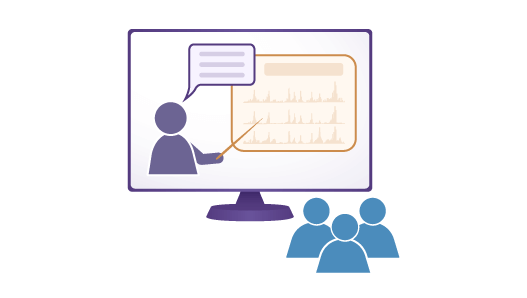<< Back to Resources Home Page

アクティブ・モティフのエピジェネティクス ウェビナー
エピジェネティクスの解析専門家による最新のテクニックとヒントを公開
(英語ですが、ぜひ聞いてみてください!)
TIP-ChIP: Tagmented, Indexed, and Pooled ChIP - High-throughput results, low input samples
In this webinar, Active Motif Scientist Sarah Traynor discusses using a new technique TIP-ChIP (Tagmented, Indexed, and Pooled ChIP), which is paired with the PIXUL multi-sample sonicator instrument to generate high-throughput, multi-sample results from low input samples.
Cutting Edge Approaches for Cancer Target Discovery and Validation
In this webinar, Active Motif and Eclipsebio partner to discuss cutting edge techniques for cancer target discovery and validation, including RNA-Seq and Multiome Analysis. The live online event will include two presentations, followed by a Q&A session.
Characterizing CRISPR-Cas9 Experiments
In this webinar, Active Motif and Eclipsebio partner to discuss emerging methods for the characterization of CRISPR-Cas9 experiments. The live online event will include two presentations, followed by a Q&A session.
Single-Cell Multiome - Open Chromatin Plus Gene Expression from the Same Cell
In this free webinar, Dr. Michael Garbati, Product Manager - Epigenetic Services at Active Motif talks about how the process of investigating chromatin has greatly improved with the recent innovation of techniques like CUT&RUN and CUT&Tag, which are faster and easier than traditional ChIP methods.
How to Use the PIXUL Multi-Sample Sonicator to Prep Samples for Proteomics
In this webinar, Dr. Alexander Schmidt, Head of the Proteomics Core Facility at University of Basel and Dr. Simon Devos, Proteomics Manager at VIB in Ghent discuss the use of the PIXUL Multi-sample Sonicator instrument to prepare samples for use in proteomics studies.
Chromatin Immunoprecipitation (ChIP) Workshop: Optimize Your Pulldowns
In this webinar, Rwik Sen, Sr. Field Applications Scientist at Active Motif discusses Chromatin Immunoprecipitation (ChIP) assays, and how to get the best results from your experiments.
ChIP-Seq, ATAC-Seq, CUT&RUN、およびCUT&Tagにおける、Spike-inを利用した正規化の必要性
このウェビナーでは、アクティブ・モティフの研究開発責任者であるBrian Eganが、ChIP-Seq、ATAC-Seq、CUT&RUN、CUT&Tagなどシーケンスベースの解析法における、正規化(Normalization)の重要性について説明します。Spike-In Controlsの必要性とその概念、実際の実験データを紹介します。
CUT&RUN法の紹介
このウェビナーでは、アクティブ・モティフの研究開発部門シニアサイエンティストであるBrad Townsleyが、CUT&RUN法の概要と、この手法が研究にどのように役に立つのか、解析事例とあわせて紹介します。
最新のエピゲノムプロファイリング法
このウェビナーでは、アクティブ・モティフの研究員であるSarah Taylorが、ChIP-Seq、CUT&RUN、CUT&Tagなどのエピゲノムプロファイリング手法の違いと、研究者がそれらをどのように選べば良いかについて説明します。
KRAS In-Well Lysis ELISA kitの紹介
このウェビナーでは、アクティブ・モティフのプロダクトマネージャーであるMichelle Carlson 博士が、KRAS In-Well Lysis ELISAキットの開発の経緯と、この製品がKRASを標的とした薬の開発にどのように役に立つのかについて紹介します。
Protein-DNA相互作用ダイナミクスのエピゲノムワイドマッピング
このウェビナーは、All-Ireland Chromatin Consortium (AICC)において、 Fred Hutchinson Cancer CenterのSteven Henikoff教授が講演した、最新のゲノムワイドなタンパク質-DNA相互作用の解析手法について紹介します。
Chromatin-Con 2023: Epigenetics of Aging Meeting
2023年の1月に3日間にわたりオンラインで開催されたChromatin-Con 2023の講演を紹介しています。リンク先より、エピジェネティクスと老化の関連について、各分野で国際的に著名な13人の専門家による講演を聞くことができます。
生物学者にとってのR利用法
このウェビナーでは、University College LondonのTorryn Poolmanとアクティブ・モティフのComputational BiologistのNick Pervolarakisが、統計解析ソフトRの基本的な機能と生命科学でどのように利用できるかについて概説します。
PIXUL Multi-Sample Sonicatorの紹介
このウェビナーでは、アクティブ・モティフのフィールドアプリケーションサイエンティストであるRwik Sen博士が、高い再現性と、ハイスループットでサンプル調製が可能なPIXUL Multi-Sample Sonicatorの紹介と、マルチオミックス解析での有用性について説明します。
UCSC Genome BrowserのData活用
このウェビナーでは、アクティブ・モティフのComputational BiologistであるNick Pervolarakisが、どのようなにUCSC Genome Browserを使うのか、基本的なデータのアップロード法や、解析法について紹介します。
Single Cell Multiome解析:ATAC + Gene Expression
このウェビナーでは、アクティブ・モティフのバイオインフォマティクス解析部門マネージャーであるWayne Doyle博士が、シングルセルでの、Multiome解析の有用性について、10X Genomics Multiome Kitの技術とあわせて紹介します。
Anchor-Based Bisulfite Sequencing (ABBS)法によるゲノムワイドなDNAメチル化解析
このウェビナーでは、アクティブ・モティフのAdvanced Research LabグループリーダーであるBenjamin Delatte博士が、論文で発表した新しい技術であるAnchor-Based Bisulfite Sequencing (ABBS)法について、ゲノムワイドなDNAメチル化解析における、その特長と従来のバイサルファイトシーケンス法との違いを紹介します。
新技術CUT&Tag Assay
このウェビナーでは、アクティブ・モティフのエピジェネティクス受託解析関連プロダクトマネージャーであるMichael Garbati博士が、最近発表された革新的に新しいCUT&Tag技術の該当と、臨床サンプルなどの貴重なサンプルに対して利用できることを説明します。
Chromatin-Con 2021: Epigenetics & Human Disease Meeting
エピジェネティクスと疾患を中心として2021年にオンラインで開催されたChromatin-Con 2021の発表をご覧いただけます。国際的な著名な先生方による、エピジェネティクス機構とヒトの疾患についての最新の研究成果が報告されています。4つのセッションのうち、2つはヨーロッパの研究者によるもので、2つは、主に北米からの発表です。
CUT&Tag Assayを利用した新しいクロマチン解析法
このウェビナーでは、アクティブ・モティフのエピジェネティクス受託解析関連プロダクトマネージャーであるMichael Garbati博士が、クロマチン解析において従来より利用されているChIP法と、新しく開発されたCUT&Tag法やCUT&RUN方がどのように違うのか説明します。
Utilizing Single-cell Workflows for Clinical Multiomics Analysis
In this webinar, Dr. Rupesh Kanchi Ravi, Director of Epigenetic Services at Active Motif, discusses how newly developed single-cell workflows, such as scATAC-Seq, and scRNA-Seq can be combined to create multiomic analysis of clinical samples, representing a major advancement from previous bulk analysis approaches.
CUT&Tag vs ChIP-seq – From Data Generation to Analysis
In this free webinar, Dr. Sarantis Chlamydas, Ph.D., Senior Market Development Manager at Active Motif, and Amit Sinha, Ph.D., CEO of Basepair Tech discuss the best ways to generate quality data using advanced, epigenomics techniques including CUT&Tag and ChIP-Seq, and then efficiently process and interpret epigenomic data using streamlined analysis pipelines.
Cardio Epigenetics Chromatin Meeting
The 1st edition of the Cardio Epigenetics Chromatin Meeting is an online event that focuses on the emerging research into the relationship between epigenetic mechanisms and cardiovascular disease.
Bridging ChIP-Seq and Translational Research with PIXUL® Sonication
In this free webinar, Dr. Joshua Messinger, Ph.D., R&D Scientist at Active Motif, describes how innovative PIXUL® sonication technology fuels techniques allowing epigenetic analysis to be conducted on clinical samples - something which was previously very difficult to accomplish.
ATAC-Seq: Mapping Open Chromatin
ATAC-Seq is a powerful technique that enables the mapping of accessible, or open, chromatin regions across the genome. The ATAC-Seq assay has been used by many researchers to investigate the role of epigenetics in many biological processes and disease states. This webinar covers the ATAC-Seq method in depth and discusses how it can be applied to epigenetics research.
Intro to ChIP-Seq Bioinformatics Pipelines
The large amount of complex data generated by ChIP-Seq experiments makes bioinformatics analysis pipelines critical for successful ChIP-Seq projects. This webinar discusses some of the most popular bioinformatics tools and approaches to analyze ChIP-Seq data and provides an introduction to help you learn how to analyze ChIP-Seq data.
Understanding Single-Cell ATAC-Seq and its Applications
ATAC-Seq and Single-Cell ATAC-Seq (scATAC-Seq) are powerful tools for investigating the epigenetic mechanisms responsible for regulating a particular cellular response or that contribute to a disease state. This webinar will explain how these popular techniques work and discuss how they can be useful in epigenetics research.
Ensuring ChIP-Seq Success
Chromatin immunoprecipitation followed by next-generation sequencing (ChIP-Seq) is one of the most commonly used tools in epigenetics research. This webinar will discuss approaches to the technique of ChIP-Seq to help ensure a successful experiment.
Tools to Study the Epigenetics of Aging
As scientists continue to learn more about the biology of aging, the role of epigenetics in regulating the aging process has become evident. In this webinar, Dr. Sarantis Chlamydas, Ph.D., Epigenetics Expert at Active Motif, discusses the epigenetic mechanisms involved in aging and highlights the available tools and strategies for studying these mechanisms.
Bringing Epigenetic Analysis into the Clinic
Epigenetic techniques have typically been difficult to use in a clinical setting. In this free webinar, Dr. Joshua Messinger, Ph.D., R&D Scientist at Active Motif discusses innovative approaches that have been developed to enable epigenetic analysis to be applied using clinical samples.
Epigenetic Tools for Blood Cancer Research
Epigenetic tools and techniques provide a valuable avenue to understanding the underlying mechanisms of disease. In this webinar, Dr. Michael Garbati, Ph.D., Technical Support Scientist at Active Motif, discusses how epigenetic methods can be applied to study specific disease states, using the specific example of blood cancers including chronic lymphocytic leukemia (CLL).
Advances in Chromatin and DNA Shearing
Achieving proper sonication of chromatin and DNA, from a wide array of sample types, is critical for the success of several of today’s most popular lab techniques. Limitations in traditional shearing approaches can lead to experimental failures and inconsistent results. Therefore, Active Motif has developed a new instrument to address those issues.
In this webinar, Dr. Rwik Sen, Ph.D., Field Applications Scientist at Active Motif, discusses how the PIXUL® Multi-Sample Sonicator addresses many of the issues around chromatin and DNA shearing.
The Epigenetics of the Exposome and Aging
Aging results in a gradual and progressive loss of physiological functions and physical abilities over time. Overcoming the growing burden of age-related issues is one of the greatest challenges facing modern society. These issues are leading to a major drain on healthcare resources worldwide, so a better understanding of the biology of aging is critically important.
In this webinar, Dr. Paul Shiels, Ph.D., Professor of Epigenetics at the University of Glasgow, discusses how our behavior and the environment impact health and aging at the molecular level.
Multiplex Profiling of Epigenetic Modifications – Measuring Assay Specific & Off-target Effects in the Same Sample
Traditionally, Histone PTM levels are measured by western blots or ELISAs, but these methods require large amounts of material and can only examine one histone modification at a time.
In this webinar, Mary Anne Jelinek Ph.D., Senior Research Scientist at Active Motif will discuss our Histone H3 PTM Multiplex Assay and its advantages over traditional western blotting.
Advances in ChIP-Based Technologies for Profiling Epigenomic Landscapes and Gene Regulatory Networks
Although ChIP-Seq has contributed greatly to our understanding of the epigenome and gene regulation, it is not without its limitations, which can impede our ability to answer complex scientific questions.
In this webinar, Adam Blattler Ph.D., Research Scientist at Active Motif, will discuss the variety of tools and services we have developed to overcome many of these challenges.
Precision Mapping: High-Resolution Mapping of Transcription Factor Binding Sites Using ChIP-Exo
Mutations that lead to changes in gene expression are common in many human diseases. Therefore, a thorough understanding of the mechanisms regulating or mis-regulating gene expression is crucial to understanding disease initiation and progression. ChIP-Seq is the predominant method used to analyze DNA-protein interactions, but it can have limited resolution in identifying a transcription factor binding site.
In this webinar, Bryce Alves, Ph.D., Research Scientist at Active Motif will discuss ChIP-Exo, a powerful technique for high-resolution mapping of transcription factor binding sites.
Advanced ChIP-Seq Normalization & Data Analysis Strategies
An ongoing problem in ChIP-Seq data analysis is the often large discrepancy between expected changes in histone marks and the actual ChIP-Seq data when using drug-treated cells.
In this webinar, Brian Egan, Ph.D., Epigenetic Services Manager at Active Motif, discusses a novel ChIP-Seq spike-in normalization strategy and shows how normalization of ChIP-Seq data using this approach reveals the expected changes in the final ChIP-Seq data set for inhibitor-treated samples.
Getting Reliable ChIP Data from Difficult Samples
Chromatin Immunoprecipitation (ChIP) is a powerful tool for studying protein-DNA interactions, but it can be technically challenging. To date, ChIP studies have been mainly limited to cultured cells and model systems.
In this webinar, Johanna Samuelsson, Ph.D., Sr. Research Scientist at Active Motif, discusses the pitfalls & challenges of generating high-quality ChIP data from difficult-to-ChIP samples, including primary cells, FFPE samples, and PBMCs.
































